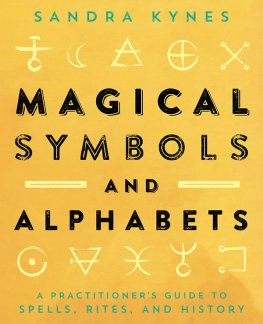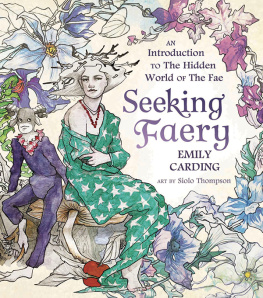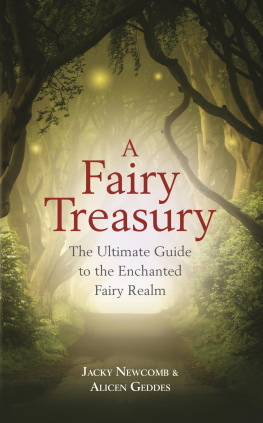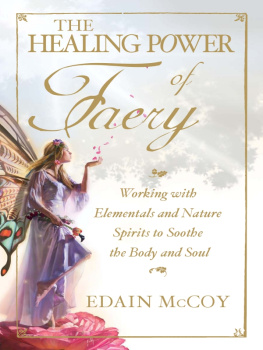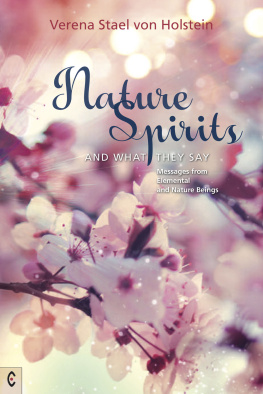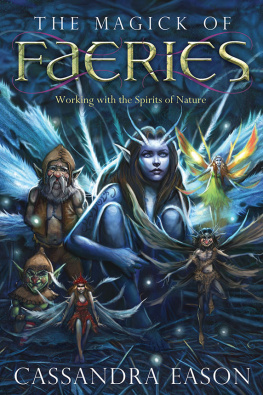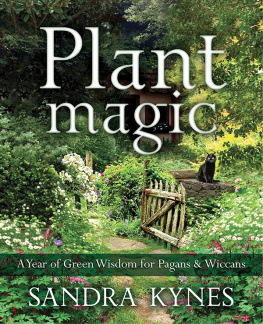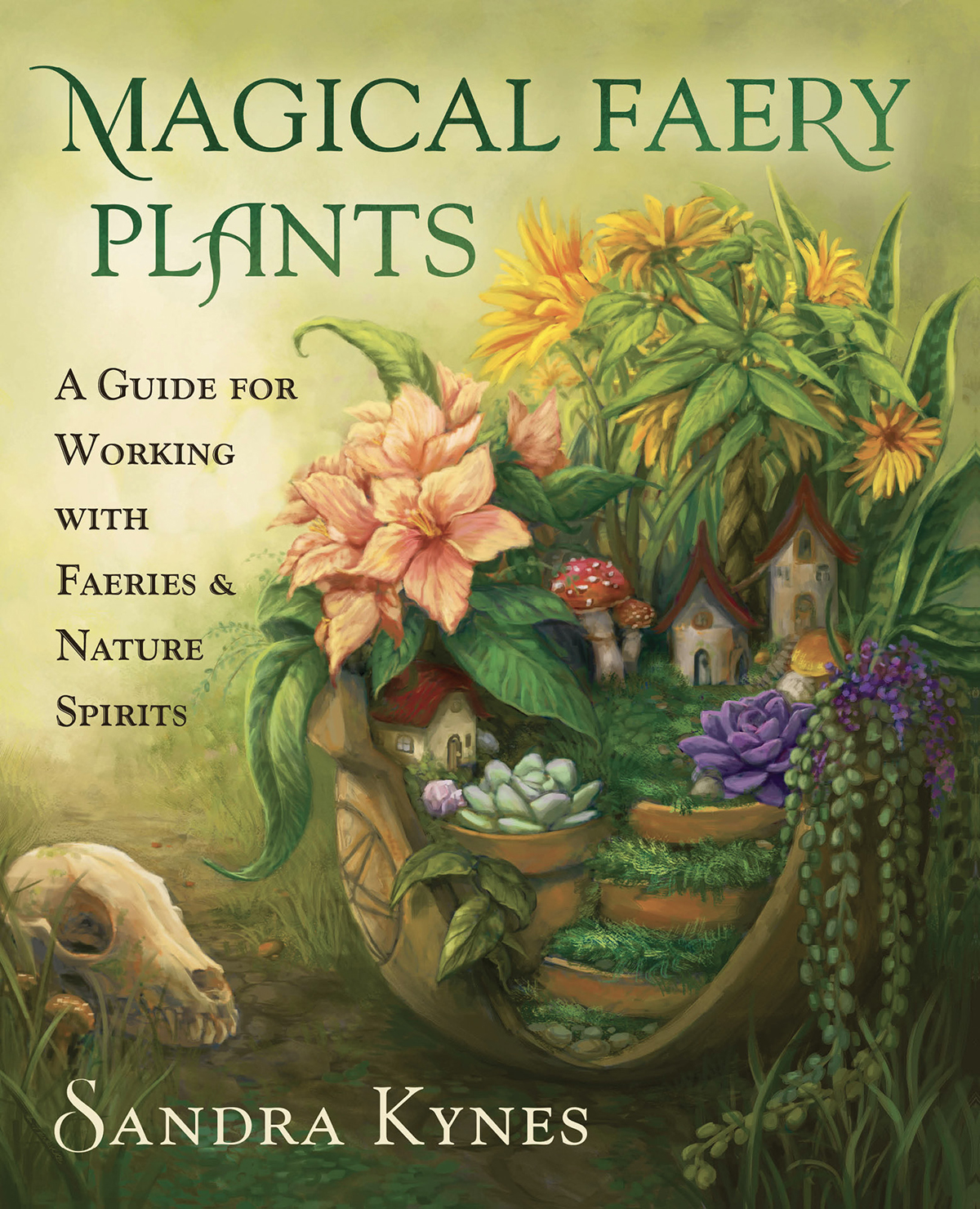Sandra Kynes is a member of the Bards, Ovates and Druids. She likes to develop creative ways to explore the world and integrate them with her spiritual path and everyday life. Her unique views and methods form the basis of her books, which serve as reference material for Pagans, Wiccans, and anyone interested in experiencing their spirituality in a different way.
Sandra has lived in New York City, Europe, England, and now mid-coast Maine, where she lives with her family and cats in a mid-nineteenth-century farmhouse surrounded by meadows and woods. She loves connecting with nature through gardening, hiking, bird-watching, and kayaking. Visit her website at www.kynes.net.
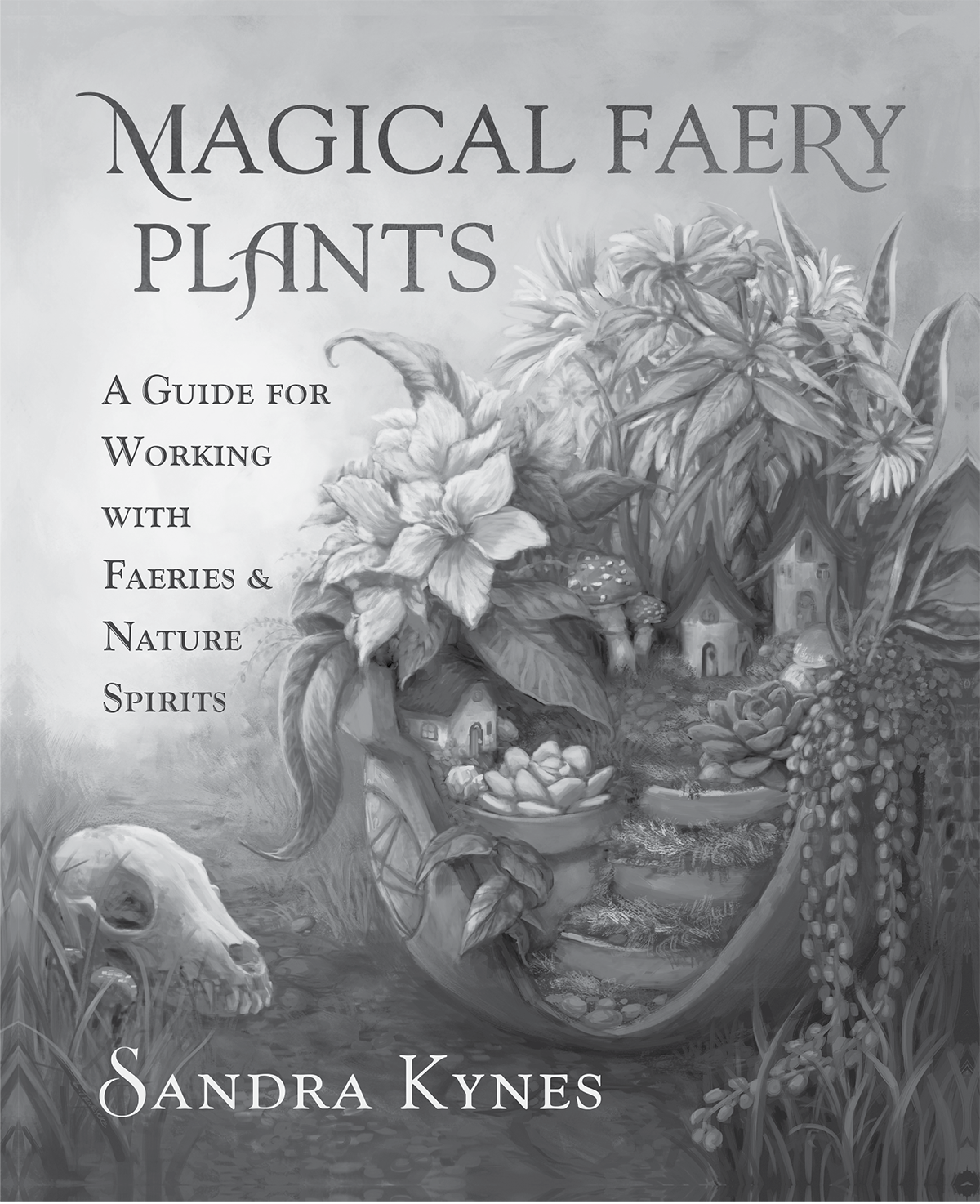
v Llewellyn Publications
Woodbury, Minnesota
Copyright Information
vi Magical Faery Plants: A Guide for Working with Faeries and Nature Spirits 2022 by Sandra Kynes. All rights reserved.
All rights reserved. No part of this book may be used or reproduced in any matter whatsoever, including Internet usage, without written permission from Llewellyn Publications, except in the form of brief quotations embodied in critical articles and reviews.
As the purchaser of this e-book, you are granted the non-exclusive, non-transferable right to access and read the text of this e-book on screen. The text may not be otherwise reproduced, transmitted, downloaded, or recorded on any other storage device in any form or by any means.
Any unauthorized usage of the text without express written permission of the publisher is a violation of the authors copyright and is illegal and punishable by law.
First e-book edition 2022
E-book ISBN: 9780738770420
Book design by Colleen McLaren
Cover art by Leanna TenEycke
Cover design by Shira Atakpu
Interior art by Melani Huggins
Llewellyn Publications is an imprint of Llewellyn Worldwide Ltd.
Library of Congress Cataloging-in-Publication Data (Pending)
ISBN: 978-0-7387-7032-1
Llewellyn Publications does not participate in, endorse, or have any authority or responsibility concerning private business arrangements between our authors and the public.
Any Internet references contained in this work are current at publication time, but the publisher cannot guarantee that a specific reference will continue or be maintained. Please refer to the publishers website for links to current author websites.
Llewellyn Publications
Llewellyn Worldwide Ltd.
2143 Wooddale Drive
Woodbury, MN 55125
www.llewellyn.com
Manufactured in the United States of America
viii
This book is dedicated to everyone who believes.
ix
Contents
: Whats in a Name?
: The Written Trail
: Getting Started
: The Faery Attunement
: Altars and Gardens
x : Faery Magic
: Journey to Faeryland
: Plant Tools
: Liquid Tools for Magic
: Powers and Attributes
Introduction
Lingering at the edge of our awareness, we sense a fleeting presence of something just beyond our reach, yet a persistent feeling tells us that we can make contact if we open our hearts and minds. We know that what we sense is not something left over from childhood dreams, because many of us believe that there is more to this world than meets the eye. In addition, we know that the natural world is the key to unlock this age-old mystery.
Establishing a connection with nature helps us access different levels of awareness that bring deeper significance to our lives. With this connection comes the self-realization that nature is not out there and separate from us; we are part of it. And when we remove the blinders of our human world, we find the fullness of this planet and the faeries and nature spirits that reside here with us. With their help, we can learn how to abide in concert with the natural world and discover how to make our everyday lives more meaningful and magical.
Before we can connect with them, we need to define who they are because the terms faery and nature spirit encompass a wide range of spiritual and supernatural beings, with variations in their descriptions that change over time and often differ according to location.
First, there are the two common spellings, faery and fairy . Although these words have different meanings, fairy is frequently used when faery is intended. Perhaps by habit, I have been guilty of this.
The word faery indicates actual beings and their world that exists close to but separate from our own. These beings are part of the long-standing faery beliefs and traditions as detailed by Scottish scholar and minister Rev. Robert Kirk (16441692), American anthropologist and author W. Y. Evans-Wentz (18781965), and Scottish author, composer, and teacher R. J. Stewart (b. 1949).
The word fairy refers to the imaginary beings and their land in stories of entertainment, not folklore. Characters such as Tinker Bell and the flower fairies of Cicely Mary Barker are examples of storybook fairies. They are cute and enjoyable, but they are not real faeries or nature spirits; they are pretend beings. That said, where the traditional and customary spelling is fairy in plant names (such as fairy flax, fairy bells, fairy cups) and other terms (such as fairy ring, fairy horse, fairy path)I have maintained these conventions throughout the book.
Magical Faery Plants is about the faery beings that exist in their own realm and from time to time enter ours. The faery tradition, often referred to as the faery faith, is not only a belief in these beings but a path for developing a relationship and working with them. According to R. J. Stewart, out of all the spiritual and supernatural beings, faeries are the closest to humans. Perhaps this is one reason why we can often sense their presence. Although sometimes regarded as part of an underworld tradition, faeries are frequently described as intermediary spirits for chthonic deities, similar to angels being intermediaries for over-world deities. Whether or not they act as any type of go-between, faeries possess ancient power, magic, and wisdom in their own right.
This book is also about nature spirits, the beings that are closely connected with a place ( genius loci ), a type of plant, or a specific plant. Just like faeries, there is a widespread belief in nature spirits in many cultures, present and past. Nature spirits function as energy movers for the particular area or plant to which they are attached. They not only work with the subtle energy of plants, but animals and humans, too. While the terms devas and elementals are often thrown into the mix when discussing faeries and nature spirits, I have developed a different definition and opinion on this. That discussion follows in chapter 1.
About This Book
Magical Faery Plants has been a long time in the making, at least twenty years, but the roots go back to my childhood. When I was little, maybe three or four years old, I saw things that other people didnt seem to be aware of. Like most kids who mention anything unusual, adults tried to convince me that I had not seen what I described and, oh my, what an active imagination! I didnt argue with them, but I knew what I had seen among the plants at the edge of our back porch and it wasnt my imagination. My mother usually shushed me and told me to go out and play with other kids. I did they just werent human kids.


